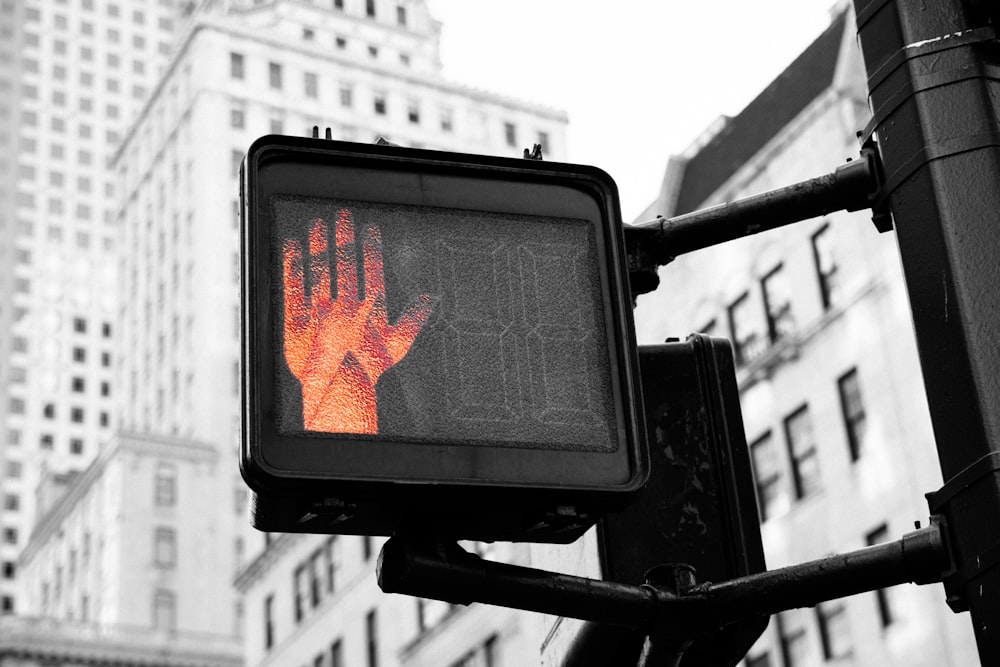relief
Say Goodbye to Hiccups Proven Tips for Quick Relief
Introduction:
Hiccups. Those pesky, involuntary contractions of the diaphragm that often catch us off guard and disrupt our daily activities. Whether they last for a few minutes or seem to linger endlessly, hiccups can be quite bothersome. But fear not! There are proven tips and tricks that can provide quick relief and help you say goodbye to hiccups once and for all.
Understanding Hiccups:
Before we delve into the remedies, let’s understand what causes hiccups in the first place. Hiccups occur when the diaphragm, a large muscle located between the chest and the abdomen, suddenly contracts involuntarily. This abrupt contraction is often accompanied by a characteristic “hic” sound, caused by the sudden closure of the vocal cords.
Hydrate Yourself:
One of the simplest and most effective ways to get rid of hiccups is by drinking a glass of water. Sipping water slowly helps to stimulate the vagus nerve, which plays a role in controlling the hiccup reflex. Additionally, swallowing water can help to reset the rhythm of your diaphragm, putting an end to those annoying hiccups.
Hold Your Breath:
Another time-tested method for stopping hiccups is holding your breath. Take a deep breath in and hold it for as long as you comfortably can. This helps to increase the carbon dioxide levels in your bloodstream, which can regulate the spasms of the diaphragm and stop the hiccups in their tracks.
Try the Paper Towel Trick:
This unconventional method may sound strange, but many swear by its effectiveness. Simply take a paper towel, fold it into a small square, and place it over the top of a glass of water. Then, drink the water through the paper towel. The slight resistance created by the paper towel is believed to help regulate the diaphragm spasms, providing relief from hiccups.
Gargle with Cold Water:
Gargling with cold water is another trick that may help to stop hiccups. The shock of the cold water can stimulate the nerves in the back of your throat, interrupting the hiccup reflex. Simply take a mouthful of cold water, tilt your head back, and gargle for a few seconds before spitting it out.
Apply Pressure:
Applying gentle pressure to certain points on the body may also help to alleviate hiccups. Try gently pressing on the space between your eyebrows, known as the “third eye” point, or massaging the area just below your collarbone. These acupressure points are believed to help regulate the flow of energy in the body and may provide relief from hiccups.
Sip Some Vinegar:
While the taste may not be pleasant, sipping a small amount of vinegar is a remedy that some people swear by. The sour taste of vinegar is thought to stimulate the nerves in the throat and esophagus, which can help to interrupt the hiccup reflex. Just be sure to dilute the vinegar with water to avoid any discomfort.
Distraction Techniques:
Sometimes, distracting your mind can be an effective way to stop hiccups. Engage in a task that requires focus and concentration,
Coping with Post-Workout Muscle Pain Essential Tips
Coping with Post-Workout Muscle Pain: Essential Tips
Understanding Post-Workout Muscle Pain
Post-workout muscle pain, also known as delayed onset muscle soreness (DOMS), is a common phenomenon experienced by many individuals after engaging in physical activity. While it may be uncomfortable, it’s essential to understand that it’s a natural response to exertion and doesn’t necessarily indicate injury. DOMS typically peaks within 24 to 72 hours after exercise and gradually subsides.
The Causes of Post-Workout Muscle Pain
DOMS occurs due to microscopic damage to muscle fibers caused by strenuous exercise, particularly activities that involve eccentric muscle contractions, such as downhill running or lowering weights. This damage triggers an inflammatory response in the body as it works to repair and rebuild muscle tissue, resulting in soreness and stiffness.
Effective Strategies for Relief
While post-workout muscle pain is inevitable to some extent, there are several strategies you can employ to alleviate discomfort and promote recovery:
1. Gradual Progression: Gradually increase the intensity and duration of your workouts to allow your muscles to adapt and minimize the risk of excessive soreness. Avoid abruptly changing your exercise routine or significantly increasing the weight or intensity of your workouts, as this can increase the likelihood of DOMS.
2. Proper Warm-Up and Cool-Down: Prioritize a thorough warm-up before exercising to prepare your muscles and joints for activity, and include dynamic stretching to improve flexibility. Similarly, incorporate a cooldown period after your workout to gradually reduce heart rate and ease muscle tension, followed by static stretching to promote flexibility and aid in recovery.
3. Hydration and Nutrition: Stay hydrated before, during, and after exercise to support optimal muscle function and recovery. Additionally, consume a balanced diet rich in protein, carbohydrates, and essential nutrients to provide your body with the fuel it needs for repair and regeneration.
4. Foam Rolling and Massage: Utilize foam rolling or self-myofascial release techniques to target tight and sore muscles, helping to improve circulation, reduce tension, and alleviate discomfort. Alternatively, consider scheduling regular massages to promote relaxation, reduce muscle soreness, and enhance recovery.
5. Active Recovery: Incorporate light aerobic exercise or low-impact activities such as walking, cycling, or swimming on rest days to promote blood flow and facilitate recovery without placing excessive stress on fatigued muscles. Engaging in active recovery can help reduce stiffness and soreness while enhancing overall well-being.
6. Rest and Sleep: Allow your body adequate time to rest and recover between workouts, prioritizing quality sleep to support muscle repair and regeneration. Aim for 7-9 hours of uninterrupted sleep each night to optimize recovery and ensure optimal physical and mental performance.
7. Listen to Your Body: Pay attention to your body’s signals and adjust your workout intensity or duration accordingly. If you experience persistent or severe muscle pain that doesn’t improve with rest and conservative measures, consult a healthcare professional to rule out any underlying issues or injuries.
Conclusion
While post-workout muscle pain is a natural part of the exercise process, it doesn’t have to derail your fitness journey. By implementing these effective
Hydrate Dry Skin Essential Moisturizing Techniques
Soothing Dry and Itchy Skin: Your Comprehensive Guide
Understanding the Itchy Dilemma
Dry, itchy skin can be an irritating and uncomfortable condition to deal with. Whether it’s caused by environmental factors, skincare habits, or underlying health issues, the itching sensation can disrupt daily life and affect your overall well-being. Understanding the root causes of itchiness is the first step towards finding effective relief.
Identifying Common Triggers
Various factors can contribute to dry, itchy skin. Environmental elements like cold weather, low humidity, and harsh winds can strip moisture from the skin, leaving it dry and prone to itching. Additionally, frequent bathing with hot water and using harsh soaps can further exacerbate the problem by stripping away the skin’s natural oils. Allergens such as certain fabrics, fragrances, and even certain foods can also trigger itching in sensitive individuals.
Effective Home Remedies
Fortunately, there are several simple and effective home remedies that can help alleviate dry, itchy skin. One of the most straightforward solutions is to moisturize regularly using a rich, emollient cream or ointment. Look for products containing ingredients like shea butter, glycerin, or hyaluronic acid, which help to hydrate and soothe the skin. Applying a cold compress or taking a lukewarm bath with colloidal oatmeal can also provide immediate relief from itching.
Lifestyle Adjustments for Lasting Relief
In addition to topical treatments, making certain lifestyle adjustments can help manage dry, itchy skin more effectively. Avoiding long, hot showers and opting for gentle, fragrance-free skincare products can prevent further irritation. Investing in a humidifier to add moisture to the air indoors can also help maintain optimal skin hydration levels, especially during the dry winter months. Furthermore, staying hydrated by drinking plenty of water and incorporating foods rich in omega-3 fatty acids, vitamins, and antioxidants into your diet can support overall skin health.
Seeking Professional Guidance
If home remedies and lifestyle adjustments fail to provide adequate relief, it may be necessary to seek professional guidance from a dermatologist or healthcare provider. They can help identify any underlying skin conditions contributing to the itching and recommend appropriate treatment options. Prescription-strength moisturizers, topical corticosteroids, or oral medications may be necessary for more severe cases of dry, itchy skin.
Conclusion
Dealing with dry, itchy skin can be frustrating, but with the right approach, relief is possible. By understanding the underlying causes of itchiness, adopting effective home remedies, making lifestyle adjustments, and seeking professional guidance when needed, you can soothe your skin and restore its natural balance. Remember to be patient and consistent in your skincare routine, and don’t hesitate to reach out for help if your symptoms persist or worsen. With the proper care and attention, you can achieve lasting relief from dry, itchy skin. Read more about dry skin itchy
Effective Rashes Treatment Solutions for Clear Skin
Understanding Rashes Treatment: Your Comprehensive Guide
Identifying the Culprit: Understanding Rashes
Rashes can be irritating, uncomfortable, and sometimes even painful. But before diving into treatment options, it’s crucial to understand what causes rashes in the first place. Rashes can stem from a variety of factors, including allergies, infections, irritants, and underlying health conditions. Identifying the root cause of your rash is the first step towards effective treatment.
Consulting with a Professional: The Importance of Dermatologists
When dealing with persistent or severe rashes, seeking professional medical advice is essential. Dermatologists specialize in diagnosing and treating skin conditions, including rashes. They can conduct thorough evaluations, perform tests if necessary, and provide personalized treatment plans tailored to your specific needs. Consulting with a dermatologist ensures that you receive expert guidance and care throughout your rashes treatment journey.
Exploring Treatment Options: From Topical Creams to Oral Medications
The approach to treating rashes can vary depending on the underlying cause and the severity of the rash. For mild cases, over-the-counter topical creams and ointments may provide relief from itching and inflammation. These products often contain ingredients like hydrocortisone, antihistamines, or moisturizers to soothe the skin. In more severe cases, oral medications such as corticosteroids, antifungals, or antibiotics may be prescribed to address the underlying cause of the rash and promote healing from within.
Managing Symptoms: Soothing the Itch and Irritation
One of the most challenging aspects of dealing with rashes is managing the symptoms, particularly itching and irritation. While treatment aims to address the underlying cause of the rash, it’s also essential to alleviate discomfort in the meantime. Applying cool compresses, taking oatmeal baths, and using gentle, fragrance-free skincare products can help soothe irritated skin and reduce itching. Avoiding scratching or rubbing the affected area is crucial to prevent further irritation and potential infection.
Preventing Recurrence: Strategies for Long-Term Relief
Once you’ve successfully treated a rash, the last thing you want is for it to come back with a vengeance. Preventing recurrence requires identifying and addressing any triggers or underlying factors contributing to the rash. This may involve making lifestyle changes, such as avoiding known allergens or irritants, practicing good hygiene, and maintaining a healthy skincare routine. Additionally, staying hydrated, eating a balanced diet, and managing stress can help support overall skin health and reduce the likelihood of future rashes.
Exploring Alternative Therapies: Natural Remedies and Holistic Approaches
In addition to conventional treatment options, some people turn to alternative therapies and holistic approaches to manage rashes. These may include herbal remedies, essential oils, acupuncture, or dietary supplements. While research on the efficacy of these treatments for rashes is limited, some individuals find relief from symptoms and improved skin health through these modalities. However, it’s essential to approach alternative therapies with caution and consult with a healthcare professional before trying any new treatment.
Seeking Support: Navigating the Emotional Impact of Rashes
Dealing with rashes isn’t just a physical struggle—it can also take a toll on your emotional well-being. Rashes, especially those that are visible or chronic,
Food plan, Exercise, And Stress Relief
 In relation to healthcare, males have a fame for being notoriously ostrich like – in that they bury their head within the sand, hoping the problem will go away. Hikers, backpackers, campers, surfers and others who are prone to find themselves away from medical care should carry extra intensive supplies. Techniques to alleviate stress include physical activity and train, breathing workout routines, muscle rest, and therapeutic massage.
In relation to healthcare, males have a fame for being notoriously ostrich like – in that they bury their head within the sand, hoping the problem will go away. Hikers, backpackers, campers, surfers and others who are prone to find themselves away from medical care should carry extra intensive supplies. Techniques to alleviate stress include physical activity and train, breathing workout routines, muscle rest, and therapeutic massage.
Litchi retains digestion sturdy, maintains a clean abdomen, improves urge for food and cures heartburn and burning sensation in the stomach. It’s wealthy in magnesium lactate, which helps scale back sinus troubles. Balance your meals by making certain you might have the right quantities of fruits, greens, whole grains, dairy and proteins while leaving sugary and fatty meals by the wayside.
A blue jay’s feathers are literally brown However because of mild scattering, jays and other blue-tinged birds will give off the appearance of being bolder in shade. Train helps you maintain a healthy weight and lowers your threat of a wide range of illnesses. This may amount to ninety six further energy burned if you drink 2 liters (sixty seven oz) of water per day (35 , 36 ).
While some exposure to sunlight could be fulfilling, an excessive amount of is harmful, causing quick results like blistering sunburns, in addition to longer-term issues like eye harm (reminiscent of age-related macular degeneration) and pores and skin problems/pores and skin cancer.
The appropriate weight-reduction plan, exercise, and stress-aid plan all play a giant function. Add more spinach to your weight-reduction plan as it’s rich in nutritional vitamins and minerals and can also be loaded with phytonutrients such as carotenoids. See the Further Links section for more information on the way to find these guidelines.
This may be a results of more social interaction, which has been found to enhance happiness,” says Caroline Adams Miller, the writer of Creating Your Finest Life ($20, ). But that does not imply that you just’re proof against the holiday blues, particularly while you’re missing a family member or burdened-out by the in-legal guidelines.




